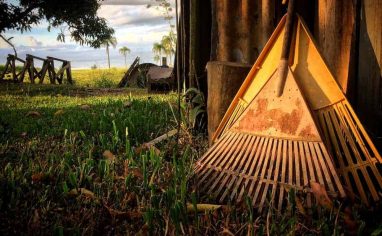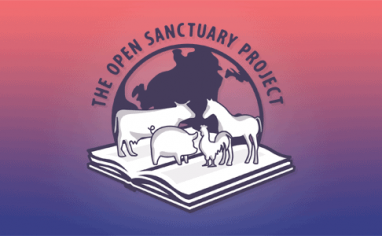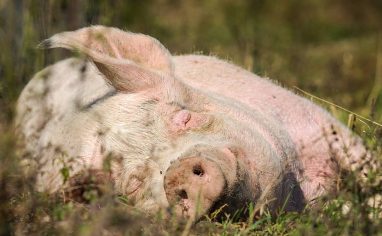
Subscribe To The Open Sanctuary Podcast
If you’d like to get the latest episodes of The Open Sanctuary Podcast, you can subscribe for free on all Podcast platforms, including Apple Podcasts and Spotify!
Episode Notes
In this episode of The Open Sanctuary Podcast, Community Education Specialist Andie and Senior Advisor Tara discuss the vital role observation plays in many aspects of animal caregiving, focusing on how we can use our observation skills to assess our residents’ health and catch subtle signs of concern.
—
This Episode’s Referenced Open Sanctuary Project Resources:
- Observation: An Important Caregiving Tool
- The Caregiver’s Guide To Developing Your Observation Skills
- Species-Specific Daily Observation For Health And Well-Being Series
- The Importance Of Veterinary Care At Your Animal Sanctuary
- The Importance Of Regular Health Checks At Your Animal Sanctuary
Episode Transcript (Auto-GeneratedThe following content was transcribed through an automated process and may contain transcription errors or misspellings.)
Andie Springirth: Hey there, sanctuary friends. Welcome to another episode of the Open Sanctuary Podcast. I’m Andie, the community education specialist here at The Open Sanctuary Project, and I am joined today by my friend and colleague, Tara, our senior adviser. Today, Tara is going to be talking to us about the importance of observation in caregiving. So, Tara, you mention observation in a lot of different resources and also have a whole slew of resources dedicated to this specific topic. So, I’m wondering for our listeners today if you can explain a little more about why observation is such an important caregiverSomeone who provides daily care, specifically for animal residents at an animal sanctuary, shelter, or rescue. skill.
Tara Hess: Yes, I would love to. Caregivers use their observation skills all the time. And what I mean by observation skills is that we’re using our senses to gather information, but beyond that, we’re making sense of that information and trying to determine first of all if it’s something we should be paying attention to, and then second, what it might mean. Sometimes we use the information we gather through our observations to learn more about our residents, and other times we can use that information to assess how our residents are doing or to make decisions about their care. So if we think about some of the common tasks that caregivers might perform, for many of them, observation is or should be part of the process. Whether we’re giving residents access to their outdoor space for the day, or feeding them, or conducting resident introductions, restraining someone for treatment, you name it. On top of what we need to do to complete that specific task, we’re also using our senses to gather information. So, if we take the example of feeding residents, in addition to thinking about everything that might go into completing that task—so maybe you have to set up the space in a certain way or maybe you have to measure out a specific amount of food—in addition to that, an experienced caregiver is probably also paying attention to the food itself to make sure it looks and smells fresh. And they’re paying attention to the residents to make sure the residents are responding to the food being put out as what the caregiver expects for those residents. Now, you know this and I know this. Sometimes our residents do things that we don’t expect, and that doesn’t automatically mean something’s wrong and you have to rush out and call the vet and beg them to come out and see the individual. But it does give you one little piece of information to take in to determine what your next steps might be. And often to determine what next steps you should take—which maybe might be to do nothing but keep it in the back of your mind that it happened—to make sense of the information, you have to put it into context. And sometimes you also have to gather even more information to actually be able to figure out what’s going on. So, thinking more about feeding residents, if I’m feeding a group of pigs, I expect them, just based on my history with the pigs I’ve cared for, I always expected them to be waiting for me. They knew what time they were getting fed. They were going to be waiting beforehand. I expected certain vocalizations and behaviors the second that can of food was touched. I just knew they were going to be excited. That was what I expected. So, if I’m getting ready to feed pig residents and someone doesn’t show up, that’s going to be noteworthy. Because I know what to expect for them, I can take that information and automatically recognize it, or immediately recognize it as unusual. But until I gather more information, I don’t necessarily know if there’s a problem on our hands or not. I just know I need to pay more attention to what’s going on. So, let’s say it’s winter, and I know the residents don’t have any access to fresh forages in their outdoor space. If there’s a pig resident who’s just completely uninterested in eating breakfast, I’m going to be way more alarmed than if it’s spring, and yesterday we opened up this beautiful large pasture, and I can look out in the distance and see that the individual who’s missing is walking through the tall grass actively rooting. Now, that doesn’t mean they’re fine. It doesn’t mean I’m not going to walk all the way out there to look at them and make sure everything’s okay. But in the first scenario, I’m going to be much more immediately alarmed that something’s going on. So, I have experience caring for pigs, and again, I’m just thinking about the pigs I’ve cared for, but that’s an example of how someone with experience with a certain species in a certain situation might take in information while feeding residents. It’s obviously going to be different depending on the level of experience someone has and whether or not they have a baseline of what to expect in the specific situation that’s going on.
Andie Springirth: Thank you for that. That’s a wonderful example. I think a lot of our listeners are going to relate to that. Pigs especially, but also, of course, many other species who have certain routines around mealtime. So, in a lot of your resources, you bring up this phrase, thoughtful daily observation, and I’m just wondering if you can talk a little more about what you mean by thoughtful daily observation.
Tara Hess: Yeah. So, to me, it’s important to stress the thoughtful part because observing our residents has to go beyond just glancing and making sure everyone’s accounted for. Thoughtful observation really requires foundational knowledge about the species you’re caring for as well as the specific individuals in your care. Now, I’m not trying to say that you can’t observe residents you don’t know. You can and you should. And that can be a really great way to learn more about them, but as you learn more about them, you’ll be able to refine and filter the information you’re taking in and how you process it. So, going back to the pig feeding example, if there’s a caregiver who maybe doesn’t know yet that this group of pig residents should be super excited to eat and should be waiting for you, they might notice that, “Oh, so and so isn’t here at breakfast,” but they might not actually think anything of it. They might not go into, probably, what a lot of pig caregivers listening are, “Oh, red flag!” They might not have that. They might just be like, “Oh, interesting,” and sort of move on and not really focus on it. To offer just a completely different example, I have pig experience, but I don’t have camel experience. And I don’t actually know if I’ve ever even been around a camel. I’ve seen pictures, but I’ve never been around a camel. I don’t know really much about them at all. So, if I somehow—I don’t know how this would happen, but if I somehow found myself in a situation or was like, “Hey, you have to take care of this camel for a while.” I don’t know, Tara, that might happen to you. I feel like if it’s going to happen to anybody, it’s going to be you. But anyway, we’ll see. So, let’s say I do have to take care of an animal, especially in the beginning, I’m going to be really limited in terms of my ability to thoughtfully observe them because I just don’t know much about them. So, that’s going to make it hard for me to determine what I need to pay attention to, and it’s going to make it really hard for me to make sense of any information I’m taking in. So, knowing the importance of observation, obviously, I would be like, “I must observe them,” but I feel like it would go a little bit like: “there they are. Look, they’re standing. That must be good,” and “Oh, look, they’re eating. Eating is good, right?” It would be very basic. But in terms of being able to catch those more subtle signs of concern that I think experienced caregivers get really good at catching, that’s not going to happen for me with a camel anytime soon. And then there’s also, and I see this happen a lot, and sometimes funny stories come from this, but if you don’t know a certain species, you don’t know what’s normal. So, I could be observing these camels and they might be doing something that’s so normal for a camel. They might make a sound that’s completely a great sign for a camel, and I could freak out because it seems not normal to me because I’m probably like, “I don’t know, are they sort of like goats or like a cowWhile "cow" can be defined to refer exclusively to female cattle, at The Open Sanctuary Project we refer to domesticated cattle of all ages and sexes as "cows."? This isn’t what those animals would do.” So, I could get totally caught up on something that’s normal and be really fixated on that and at the same time miss something that an experienced camel caregiver would walk in and be like, “Look, nope, look at this right here.” Because I just don’t have that knowledge. So, to fully observe our residents, I think it’s really helpful to have foundational knowledge about their species. So, you want to know things like their typical physical characteristics, behaviors, body language, vocalizations, etc. You also want to know what are the typical signs of health and well-being in the species and what are signs that something might be wrong. And of course, you don’t learn all this on day one. This is just sort of what you’re striving to accumulate throughout your time caregiving. It’s also really helpful to know some of the more common health issues that affect that particular species or maybe a breed of a specific species or whatever, because if you know that those are more common, of course, anything can happen. It’s not always the most common health issues that come up, but knowing some of the more common health issues that a certain species deals with and knowing how they manifest, you can start to refine your observation, where you’re looking for some of those specific things. And you can also then get even more refined where if it’s a seasonal health issue, then you’re sort of changing the lens through which you look depending on the season, like, “Oh, it’s time that I should be worried about this or this.” Not looking for signs of frostbite when it’s 70°, you’re looking for that when you just had a cold spell or something like that. So, those are some of the things that I think it’s important to have as a foundation in terms of the species, but then as you get to know your residents, you can take it a step further and factor in what you know about each specific individual. So, I hear stories all the time, I’m sure you have. I have my own. You probably do, too, where a caregiver knows something’s wrong with someone because they’re not acting like themselves. Sometimes they can’t quite put their finger on what it is, but they’re just not acting like themselves. And so sometimes the thing they’re honing in on is not something that in general is an automatic sign of concern in that specific particular species, but for this individual, based on what you know about them, it is that something is not right. So to me, thoughtful observation means that when we’re observing our residents, we’re doing so through multiple different lenses. So, we’re paying attention generally for anything that’s unusual. But then we might be adding the lens of, say, a goat resident. I know this goat resident has a history of hunosis in the summer, so I’m really paying attention for signs that they might be dealing with that again when I’m observing them. Or maybe we know that a certain resident isn’t really comfortable with us. And so when we enter their space, we expect them to keep their distance. So if I have that information and an individual stays lying down when I walk by them, that’s going to be a big red flag to me and I’m going to process that information in a completely different way than if a different individual did it, because I just have different expectations based on what I know about them. So I think thoughtful daily observation is right up there with performing routine health checks and making sure your residents have regular access to veterinary care in terms of the tools that we can use to make sure we’re catching potential issues as soon as possible.
Andie Springirth: Right. And before I move on to the next topic, I just want to give my own example as well of this that just brought to mind two things regarding looking for the species-typical versus atypical signs, and also the individual things. So, I grew up with cats. And I know I’m talking about more typical, stereotypical companion animalsAnimals who spend regular time with humans in their home and life. Typically cats and dogs are considered companion animals, though many species of animals could also be companion animals. here, but cats: here’s an example. When their tail is straight up, if you all have been around cats before, they’re actually very happy. With a dog, when their tail is straight up, what I learned as a kidA young goat, I was like, “Oh, they’re so happy to see me.” And my cousin was like, “No, no, no. They’re actually very much on alert right now.” So, you were just comparing pigs with camels. What could be a really good sign for a cat, or whatever species it may be, may be almost completely opposite in another species. So, just kind of reinforcing what you said about taking these things, keeping them in mind as you’re doing your daily observation, and maybe even making note of it. The other thing in terms of individual behavior. Once you get really experienced with someone, it just made me think of one of our cats, our family cats, who has since passed, but he used to sleep by my head on our pillow every single night. I mean, for years, eight years. And then one day, it just stopped. Of course, it did end up being a health issue. But there’s a sign, right? Having lived with him for eight years, I was very experienced, very tuned in to his very minute behavioral nuances and changes and things like that. And someone who didn’t know him would be like, “Oh, well, maybe he just wanted to sleep on the couch that night,” and you’re like, “No, Herman was on my head every single night.” So anyway, yeah, your examples were super helpful and I was immediately able to relate it to my own personal experiences. So I just wanted to thank you for that, and I know our listeners are going to have residents in mind and maybe even companion animals from their own histories in mind when they think of that. And I think it’s good to have those examples and then to relate it to your own experiences. But I just want to go back to something you said at the very end of talking about what thoughtful observation means to you. You mentioned that for you it’s right up there with routine health checks and regular veterinary care. And so that’s actually something that you also include in a number of your resources. And I’m wondering if you can talk a bit more about that too.
Tara Hess: Yeah, absolutely. For me, I really feel it’s that combination of the three aspects of care: thoughtful daily observation, routine health checks, and regular veterinary care that are going to make it much more likely that you’re going to catch issues as soon as possible. I really picture them as pretty equal and working in tandem with each other, because there are certain things that you could be really good and intentional about observing your residents every day, but there are certain things you’re not going to detect without a hands-on evaluation. So routine health checks are crucial. And then there are also certain things that are just more likely to be detected during a veterinary exam than one performed by a caregiver. Obviously, we say all the time how important veterinary care is. But there’s also so much that can happen in between routine health checks and regularly scheduled vet visits, wellness exams. And so that’s just one reason why I think daily observation is so important, because it’s continuing to keep tabs on how they’re doing in that in-between period, as opposed to just waiting until you’re like, “Oh, I’m going to do a health checkThe Open Sanctuary Project uses the term "health check" to describe health evaluations performed by caregivers who are not licensed veterinarians. While regular health checks are an important part of animal care, they are not meant to be a replacement for a physical exam performed by a licensed veterinarian. right now.” And then there are also certain things that you are going to have a hard time detecting without actually doing an exam or looking in someone’s mouth or touching them. There are also things that are going to be hard to pick up on if you’re not just spending time observing an individual while they’re going about their day and then different parts of their day. And this is especially true with slight changes in behavior or changes in routine, which can also be a really big red flag. And again, that goes back to what we were both saying about someone acting off or they’re just not acting like themselves. So, you can go to your vet and be like, “Well, Herman didn’t lay down on my pillow.” And that’s not some clinical sign of disease, but where they can be like, “Ah, yes, they have this specific condition,” but it is a clear indication that something has changed, something’s going on, and then it’s getting down to the work of figuring out what it is. So, to offer another example, I could sit down and I could do a health check, a really thorough health check on a gooseUnless explicitly mentioned, we are referring to domesticated goose breeds, not wild geese, who may have unique needs not covered by this resource. resident, because it’s time to do health checks on the geeseUnless explicitly mentioned, we are referring to domesticated goose breeds, not wild geese, who may have unique needs not covered by this resource.. And I might not notice anything particularly unusual that makes me concerned about how they’re doing. But if then I spend part of the day sitting and observing the geese and I see that this individual is not with their mate, and I know that those two are always together, that’s going to be a red flag for me for both of them. I don’t know where the concern is, but that’s going to be something again where it’s not necessarily rush out and call the vet, but there’s so much information around us. We can only take in so much. That’s a really good clue where you’re like, “Ah, I need to put my attention right here right now and see what’s going on and just get down to business. I’m trying to figure out what’s going on.” And it could be something that ends up being a fluke. Oh, someone closed a gate and, oh no, they’re separated and they couldn’t get together, or maybe someone’s not feeling well. We just don’t know until you get more information. So thoughtful observation on a daily basis makes it so much more likely that you’re going to catch those subtle signs of concern before someone’s showing those really obvious signs that they’re injured or sick. And the sooner we can detect that something might be brewing, the sooner we can start figuring out what might be going on, maybe start some treatments, some care modifications to address the issue. And in many cases, that’s probably going to require working with an experienced vet. So, as I said, you might not call the vet the second you see that someone’s not acting like themselves, but as you gather more information and sort of rule out different benign concerns, then you could be like, “Oh, I should get them seen or I should chat with my vet to try to figure out what’s going on.” And I also just want to add, because I keep saying daily observation, it’s daily and more, right? Like throughout the day. So, I don’t want anyone to think that it’s this sort of thing that you’re like, “Oh, look, I looked at the residents, and not just looked, but I really paid attention to them. I spent some time today. I’ll cross it off my list. I don’t have to worry about it again until tomorrow.” Because ideally, caregivers should work toward the goal of incorporating observation of their residents into pretty much everything they do. So, whenever you’re in their living spaceThe indoor or outdoor area where an animal resident lives, eats, and rests. or even just close enough where you can see or hear them, you should be paying attention because there could be something that comes up that is going to immediately mean something to you. And each time we observe our residents, it’s important, but it’s just one snapshot of the bigger picture. And so, the more snapshots we can take, the better and the more information we’re going to have. That said, it takes time and practice to develop your observation skills. So, for folks who are like, “I already have so many things to do, how am I going to fit this in or how do I even get started with this?” I’d recommend being really intentional about taking time to stop and observe your residents each time you enter their space. Even though I said, “Oh, incorporate it into everything,” in the beginning, I would not try to multitask because there’s a really good chance that you’re going to end up focused on—at least that’s how it was for me. I was focused on everything on my to-do list. I was worrying about whether I forgot something at the last resident area. I was thinking about what I had to do and how much time I didn’t actually have to do it in. Even though it might feel like time is short, which I’m sure it is for all the caregivers listening, just taking a minute to just be like, “I’m going to really just clear everything else out of my brain and just pay attention to what’s going on with the residents around me.” I think that’s really, really important. And even if there’s nothing concerning going on, which is great, there’s still so much information that you can take in that’s going to just make you know them even better. So then when someone is off and they’re not acting like themselves, you’re more likely to catch it.
Andie Springirth: Oh my, so many good tips in here about observation. It actually just now made me think about—and I know you talk about this in your resources that include observation skills as well—but just looking at the residents and also kind of scanning around them too, because I remember as a caregiver with cowsWhile "cows" can be defined to refer exclusively to female cattle, at The Open Sanctuary Project we refer to domesticated cattle of all ages and sexes as "cows.", I was in there doing my daily morning routine and feeding them, and one of the other caregivers who was very experienced with the cows came in and was kind of looking around the space and found there’s a specific word for this, Tara, and I’m sure you know this, but it’s when they drop, when cows drop their cudFood matter that returns from the first stomach compartment back to the mouth for further chewing.
Tara Hess: Oh. Yep.
Andie Springirth: What is that? You know, isn’t there a term?
Tara Hess: I mean, I say dropping off cud.
Andie Springirth: Okay. I don’t know why I’m thinking there’s another word. Maybe
Tara Hess: It does have a turd or something.
Andie Springirth: Of course, now in my brain it’s not coming to me, but
Tara Hess: But you know what I mean.
Andie Springirth: And so she had noticed these clumps on the ground, but if you were just kind of doing your routine and you see them chewing, and you’re just doing a quick glance, and you’re like, “Everybody’s eating. They’re fine.” But she was like, “Look at that!” And then we’re walking around the paddock and it’s like, “Look at that, look at that!” And so there, and of course, going the step further and as you were just talking about, to gather more information about what was going on, and unsurprisingly, there was something that was, thankfully, something we could manage. But yeah, that was an experience. Someone who is experienced with cows knew to look for something like that, whereas someone like me, who had at that time limited experience, was not looking for that. I was like, “They’re chewing their cud.” Yeah.
Tara Hess: That’s such a good point. Sometimes the clues are in the environment. You might find a pile of diarrhea, or vomit, or a drop of blood somewhere. And then, then again, you’re like, “Okay, now I need to look more. I need to start investigative work to figure out if someone just broke a toenail and it’s no big deal, or if something more serious is going on.”
Andie Springirth: And also, I do remember, too, that I know multitasking is definitely a next level, perhaps we could say, in that way. But also, I know a lot of folks get a lot of good observation in while they’re grooming residents, and that might be a more relaxing way to multitask. I’m thinking, if you’re brushing somebody, but still, I do like that you have these different stepping stones to get to being an experienced observational caregiver. So thank you very much, Tara, for sharing all that with everybody. That was incredibly helpful and enlightening. And I just want to mention to all of our listeners that Tara has an entire resource on developing caregiver observation skills that folks can check out for additional tips. It’s called “Observation, an Important Caregiving Tool.” So, we’ll link to that resource in the show notes as well as the rest of our observation resources that will help inform your caregiving staff and you as well. Tara, thank you so much for talking us through this important topic. And for our listeners, thank you so much again for tuning in. We really hope that this information has been helpful and useful. And as always, if you have any questions, comments, or feedback that you’d like to share with us, please do get in touch with us via social media or via our contact page at www.opensanctuary.org. Until next time, friends. Thank you.

Got A Podcast Idea? Contact Us!
If you have a topic or question you’d love to hear our staff address on The Open Sanctuary Podcast, please get in touch via our contact form!








